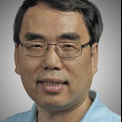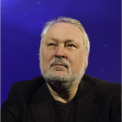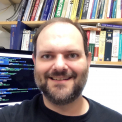Events Calendar View
-
CSP Lunch Seminar
Aug 27, 2019
Understanding the extreme Thouless effect in a simple, dynamic social network - the XIE model
-
Departmental Colloquium
Aug 29, 2019
Nonequilibrium statistical mechanics: Small steps at a vast frontier of "pure and applied" theoretical physics
When I was a student in the 60's, research in most physics departments are focused in elementary particles or solid state physics (some in astronomy, as in UGA). To prepare students for those frontiers, the core curriculum - which included equilibrium statistical mechanics - was adequate. Over the last decade or two, other disciplines blossomed onto the physics scene, from biophysics and econophysics to neuroscience and climate science. Most of the stochastic processes in these areas, on the other hand, take place under nonequilibrium conditions. Unfortunately, an overarching framework for such systems is far from being in place. Though many condensed matter theorists are engaged at this frontier, the general goal of understanding how complex collective behavior emerge from simple microscopic rules remains elusive. As an example of the difficulties we face, consider predicting the existence of a tree from an appropriate collection of H,C,O,N,... atoms! After a brief summary of the crucial differences between systems in thermal equilibrium (in standard text-books) and ones in nonequilibrium steady states, I will give a bird's-eye view of some key issues, ranging from the "fundamental" to the "applied." The methods used also span a wide spectrum, from computer simulations to stochastic field theoretic techniques. These will be illustrated in the context of an overview of my work, as well as one or two examples.
-
Departmental Colloquium
Sep 5, 2019
Attosecond X-Rays Reached the Water Window
The advent of Ti:Sapphire lasers in the 1990s leads to the first demonstration for attosecond XUV pulses in 2001. In last 5 years, carrier-envelope phase stabilized lasers at 1.6 to 2.1 micron based on Optical Parametric Chirped Pulse Amplification pushed attosecond light sources to the “water window” X-rays that cover the 280 to 530 eV photon energy range, which enabled real-time observation of electron and nuclear motion in molecules containing carbon, nitrogen and oxygen. Very recently it was used to probe ionization, vibration and rotation dynamics of nitric oxide with unprecedented temporal resolution.
-
CSP Lunch Seminar
Sep 10, 2019
Introduction to GACRC Computing Facility - Sapelo2 Cluster - Part II
-
Departmental Colloquium
Sep 12, 2019
The Time Domain and Multi-Messenger Astrophysics Frontiers-A brief sampling of personal explorations-
We live in a truly golden age of discovery-driven progress in deciphering the workings of our Universe. We are now collecting data across the entire electromagnetic spectrum, from the radio-band to gamma-rays. Light, the traditional tool of astronomers, has been augmented by other messengers, such as meteorites, energetic particles, neutrinos and gravitational waves. The era of Multi-Messsenger Astrophysics (MMA) is here and has enabled us to experience a breathtaking expansion of knowledge boundaries: we are in the era of precision cosmology, we discovered supermassive black holes in almost all galaxies, we mapped the shadow of a black hole, we listen to gravitational waves from merging compact star binaries, we discovered thousands of exoplanets, and we chart the cosmos back to the time of the first stars and galaxies. With focus on Time Domain astronomy (TDA), i.e., the study of transient phenomena, I will present current developments and discuss the road ahead. I will comment on the origin of gold, speculate on predictable discoveries and present the probe-class mission TAP (Transient Astrophysics Probe) presented to the ongoing Decadal Survey.
-
CSP Lunch Seminar
Sep 17, 2019
Using the CSP Site to Promote Your Research and Yourself
Page 95 of 121, showing 6 records out of 723 total, starting on record 565, ending on 570





